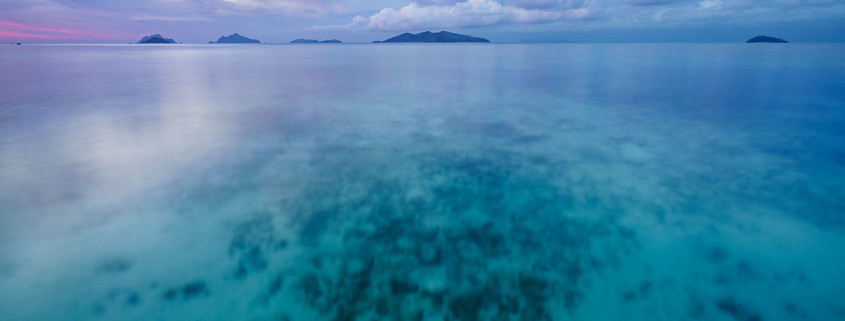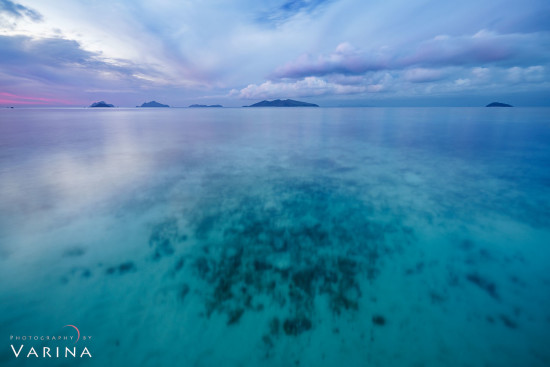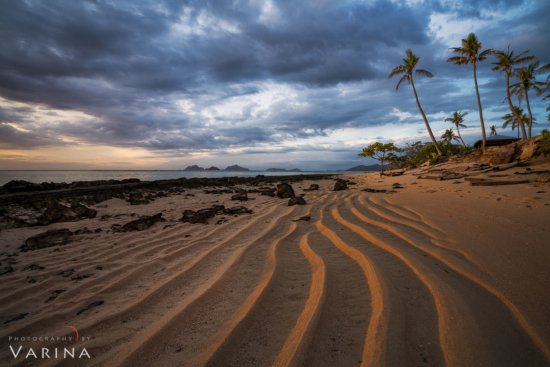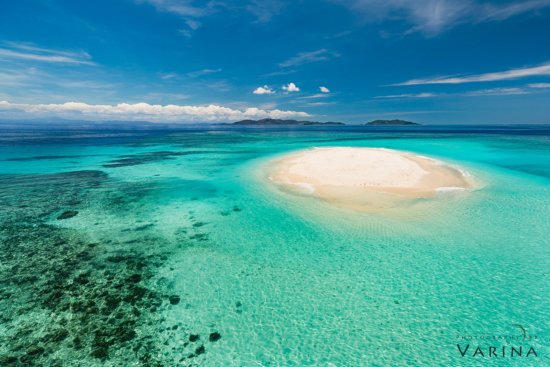8 Tips for Better Beach Photography
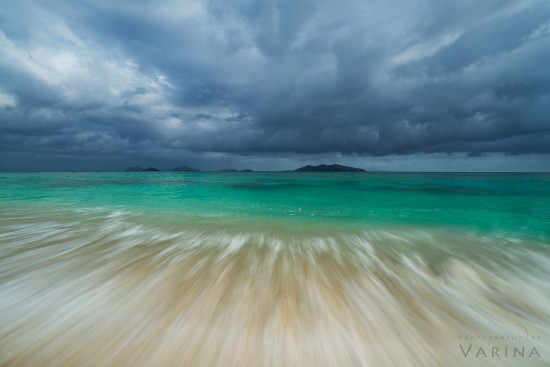
Sunset Beach – Mana Island, Fiji. Storms raced toward us, and rain fell on nearby islands as the sun broke through gaps in the clouds behind me. I couldn’t get enough of photographing the brilliant sunlit glow on the water under those heavy skies. A quarter-second shutter speed gave me smooth streaks of white foam on the sandy beach.
Tips for Shooting on the Beach:
- Make sure your tripod is stable. Mine kept sinking into the sand as waves rushed past me while I was shooting the above photo, so I pushed the lower legs deep into the sand for more stability. I checked my tripod frequently as I took several shots – making sure the horizon was still level.
- Pay attention to light and color. Water provides an amazing reflector, bouncing light and color all over the place. You can use a circular polarizer to help cut through glare on the surface of the water so you can see the color and details underneath (as I did for the shot below) – but you might want to put it away if you want to capture reflected light on the water. Your circular polarizer filter might take some of those pretty reflections away. Experiment to see what works best for each composition.

Sunset Beach – Mana Island, Fiji. For this shot, I used a circular polarizer to help cut through the glare on the surface of the water so I could see the rich turquoise color and the textures below. I used a 30-second shutter speed to completely smooth the surface of the water for a peaceful feel and a miminalist composition.
- Experiment with different shutter speeds for completely different effects. You can use a fast shutter speed to capture a splash frozen in time, or a slow shutter speed to create silky streaks as waves move in and out. An even longer shutter speed will create a foggy effect if the waves are crashing hard – but when the surface of the water is calm, it will smooth the ripples and simplify your composition.
- Get in close with a wide-angle lens to make the most of textures, patterns, and leading lines. A wide angle lens will make object close to you seem larger relative to things that are further away. You can use that effect to your advantage. Learn to use hyperfocal distance so you know exactly how close you can get to your foreground.

Sunset Beach – Mana Island, Fiji. These natural ripples in the sand made perfect leading lines. I noticed them when I arrived at the beach, and waited until the sun was low in the sky for this painted-with-light effect. I brought my tripod down low and used a wide-angle lens to make the most of the depth in the scene.
- The brilliant colors in the water really come out at mid-day – but watch out for blown highlights. I know that you’ve heard you should only shoot early in the morning or late in the evening… but don’t believe it. Sometimes, mid-day light can make a world of difference. In a place like Fiji, the colors in the water are most intense when the sun is high in the sky, so don’t be afraid to pull out your camera at high noon. The colors will be most intense if you are shooting from above the water – an overlook is a great spot to shoot from at mid-day… but a helicopter will do in a pinch. ;)
- Don’t let go! A big wave or a sudden shift in the sand under your tripod can send your camera toppling into the water… which is a sure way to put a shadow over your trip. Hold on to your tripod even if you think it’s stable, and make sure your gear is in a safe place.
- Wear neoprene water shoes and quick-dry pants if it’s cold – or wear water shorts and go barefoot if it’s warm. I don’t care how calm the ocean is, you might as well plan to get wet. ;) Even if a wave doesn’t come up and splash you, you’ll probably find yourself wanting to wade a little ways out for that perfect composition – and then just a little further…
- Never turn your back on the ocean. Even the calmest ocean can send a big wave pounding toward shore now and then. Keep your eyes wide open, and stay safe out there!

